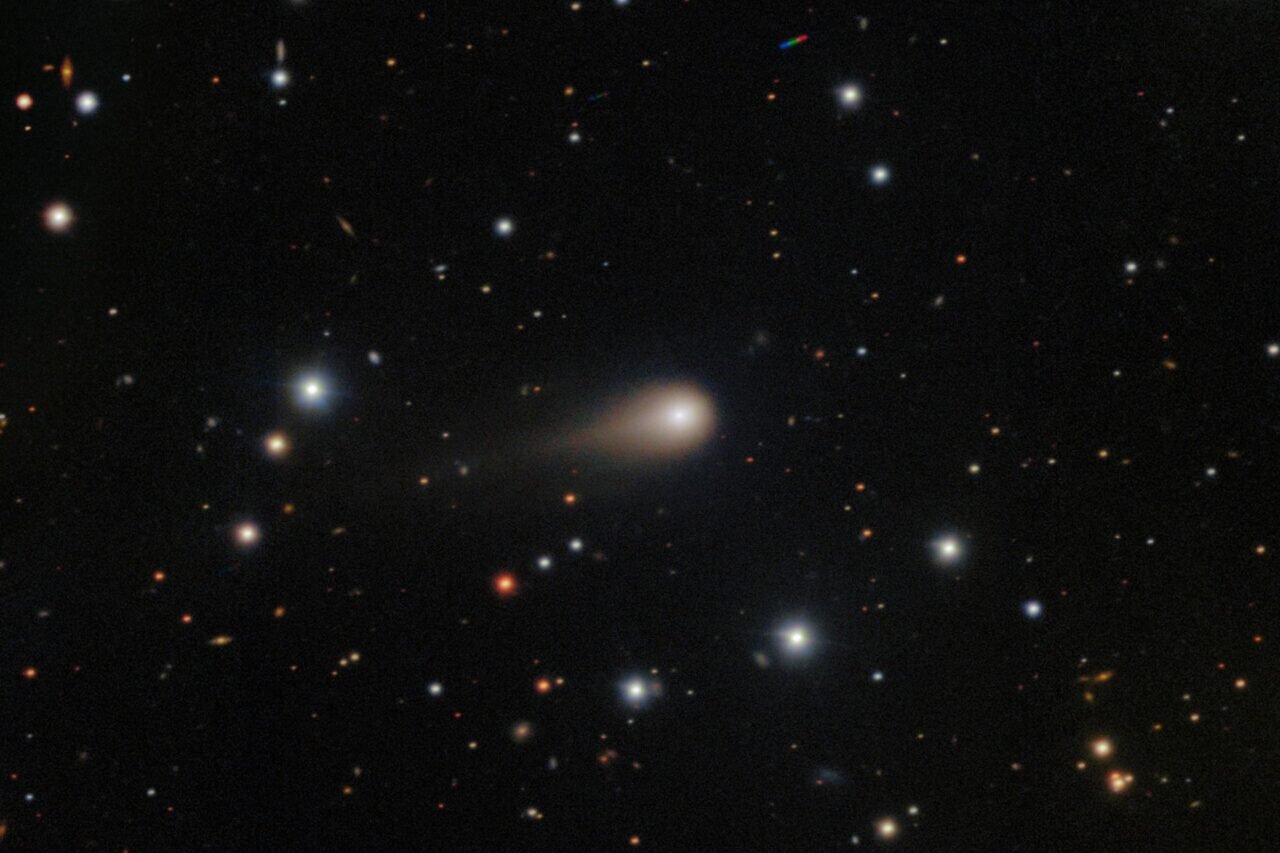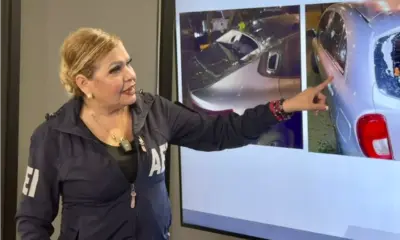Science
NASA’s Europa Clipper Aims to Sample Interstellar Comet 3I/ATLAS

NASA’s Europa Clipper probe is positioned to potentially capture material from the ion tail of the interstellar comet 3I/ATLAS as it travels through the inner solar system. Scientists have determined that the probe could intersect with the comet’s ion tail between October 30 and November 6, 2023, marking a unique opportunity to study material from beyond our solar system.
Two European researchers, Samuel Gran from the Finnish Meteorological Institute and Geraint Jones, a project scientist at the European Space Agency, have published preliminary findings on the preprint server arXiv. Their research indicates that the Europa Clipper might collect data on charged particles emitted by the comet, a significant step given the limited information available on interstellar comets and their origins.
Potential Breakthrough in Space Research
Gran emphasized the importance of this mission, stating, “We have virtually no data on the interior of interstellar comets and the star systems that formed them. Sampling the tail in this way is the closest we can currently get to a direct sample of such an object, and thus a different part of the galaxy.” This mission could provide insights into the building blocks of comets that originate from distant star systems.
The comet’s tail has become increasingly prominent since its discovery in early June, as it approaches the Sun. The heat from the Sun is causing 3I/ATLAS’s icy core to release gas and dust, expanding the ion tail and increasing the chances of capturing samples as Europa Clipper approaches. The probe is en route to Europa, one of Jupiter’s 95 moons, where it will investigate whether conditions beneath its icy surface could support life.
Equipped with a suite of scientific instruments, Europa Clipper is well-prepared for the analysis of the ion tail. The stream of charged particles emanates from the Sun, propelled by solar wind, and Gran and Jones utilized their “Tailcatcher” computer program to estimate the likelihood of an intersection between the probe and 3I/ATLAS’s tail.
Challenges Ahead for the Probe
Despite the promising outlook, several challenges could impede the mission’s success. Currently, the instruments necessary for data collection on Europa Clipper are inactive while the probe travels toward Jupiter. With a government shutdown affecting NASA operations, it remains uncertain whether these instruments can be activated in time for the encounter.
Additionally, the solar wind must be aligned precisely to ensure that the charged particles from the comet’s tail reach the probe. 3I/ATLAS is set to reach perihelion, its closest approach to the Sun, on October 29, making this the optimal time for capturing a sample, as the tail will be at its broadest just before the planned crossing window opens.
If successful, this mission would represent the first direct collection of material from an interstellar object by any spacecraft. Even in the event that Europa Clipper does not capture ions directly, the probe may still detect magnetic field draping and shock signatures that indicate the presence and structure of the ion tail.
The potential for groundbreaking discoveries makes the upcoming weeks critical for scientists and space enthusiasts alike. The intersection of the Europa Clipper with 3I/ATLAS could not only enhance our understanding of interstellar comets but also provide clues about the formation of our solar system and beyond.
-

 Business3 days ago
Business3 days agoInvestors Eye Potential $60,000 Gains with Ozak AI Token
-

 Politics5 days ago
Politics5 days agoFormer Pastor Arrested on Human Trafficking and Indecent Charges
-

 Business4 days ago
Business4 days agoQuotient Wealth Partners Adjusts Holdings in iShares Russell 1000 ETF
-

 Lifestyle5 days ago
Lifestyle5 days agoNatty from KISS OF LIFE Stuns in Micro-Shorts at Seoul Event
-

 Politics4 days ago
Politics4 days agoSkip Bayless Critiques Travis Hunter’s Game Day Baptism
-

 Entertainment5 days ago
Entertainment5 days agoUtah Residents Face Resource Shortages Amid Ongoing Government Shutdown
-

 Business5 days ago
Business5 days agoCalifornia to Ban All Plastic Bags in Grocery Stores by 2026
-

 Entertainment4 days ago
Entertainment4 days agoPete Davidson Surprises Pregnant Girlfriend with Private Jet to Concert
-

 Entertainment5 days ago
Entertainment5 days agoAce Frehley, KISS Guitarist, Passes Away at 74 After Fall
-

 Politics5 days ago
Politics5 days agoIberia Parish Sees Surge in Marriage Licenses Issued in October
-

 Entertainment5 days ago
Entertainment5 days agoEastside Kings Festival Celebrates Austin’s Rich Blues and Jazz Heritage
-

 Science5 days ago
Science5 days agoMIT Develops Groundbreaking 3D Brain Models for Personalized Therapies









